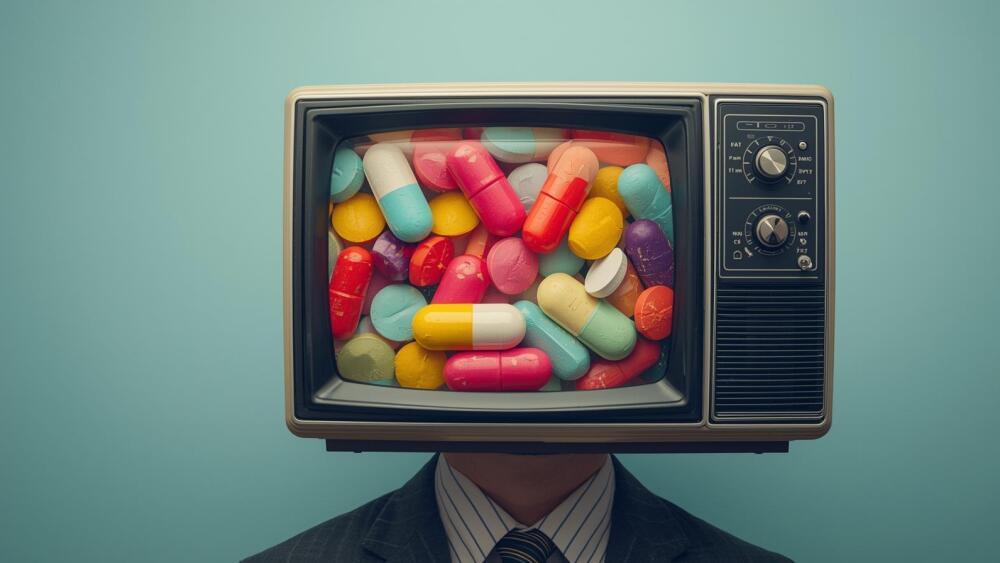While the FDA is trumpeting this new initiative as “sweeping reforms” to the way drug companies can advertise, experts say the regulator is going after a problem that doesn’t exist.
Americans hate pharmaceutical ads. So when the FDA announced last week an effort to curb advertisements that do not list the complete body of evidence on a drug’s potential safety risks, the public cheered.
“Pharmaceutical ads hooked this country on prescription drugs,” HHS Secretary Robert F. Kennedy, Jr. said in a prepared statement. The FDA presented the crackdown as a way to close the “adequate provision” loophole from the 1997 regulation that has allowed pharmaceutical companies to advertise their drugs without fully disclosing risks.
Without rattling off the full list of potential outcomes, drug companies have been “fueling inappropriate drug use and eroding public trust,” according to the agency’s Sept. 9 announcement. The FDA is seeking to close this supposed loophole and require drug companies to include all the safety data.
There’s just one problem, according to experts involved with writing pharmaceutical advertising regulation, which came into effect in 1997: It wasn’t a loophole. It was a deliberate and carefully crafted law that struck a happy medium between the demands for marketing new drugs and informing patients.
And, while the FDA is trumpeting this new initiative as “sweeping reforms” to the way drug companies can advertise, experts say the regulator has not suddenly expanded its authority—it can’t do that without an act of Congress. This has left the industry reeling and unsure of whether what the FDA has done under Kennedy is even remotely legal.
Mark Gardner, founder and managing partner of FDA law firm Gardner Law, said Kennedy is following through on a campaign promise he made when running for president: to ban drug ads once and for all.
“I think they’re chilling free speech by just trying to ban drug advertising on TV and social media,” Gardner told BioSpace in an interview. “The commercial free speech doctrine protects free speech as long as it’s truthful and not misleading. So I don’t think they’re going to prevail unless they prove these drug ads are misleading.”
Drug ads certainly can be misleading at times. The FDA has authority to penalize advertisers if they do step out of line, and over its history it has issued cease and desist letters to that order.
“There’s local and state laws going back literally 200 years regulating drugs and foods and things, because people will lie,” Gardner said. “If left unregulated, unchecked, we will have dangerous drugs and foods and medical devices in the hands of consumers.”
FDA Commissioner Marty Makary argued in a recent JAMA article about the crackdown that the agency’s enforcement has declined dramatically, from hundreds of enforcement letters sent in the late 90s as the regulation took hold, to just one sent in 2023. Makary said none were sent in 2024.
Now, the FDA has essentially said with its recent action that the past 30 years of regulatory and legal precedent is null, Gardner said. The agency has issued about 100 letters to companies which have yet to be made public, despite calls to do so.
Drug companies have been required to summarize the safety risks and clinical data in their often 30-second spots since they were granted the right to run the ads in 1997. They tend to do so by having a voiceover listing these potential risks—a trope that is often made fun of across American culture.
If the FDA gets its way now, though, drug companies will have to include all safety data. That means the entire product label, which regulatory consultant Paul Kim described as “The Bible” of safety risks and benefits that is created when each product achieves approval. Drug ads currently must include directions on where to find this information but they have not, until now, had to include it word for word. If they do, Gardner said ads will be 10 minutes long and impractical.
‘Learned Intermediaries’
The FDA realized it had better do something about pharma ads in the 1980s when consumers began to take a greater interest in their healthcare, according to Kim, who is principal for Kendall Square Policy Strategies.
“There was an argument that people would not only be able to have a good discussion with their learned intermediaries, but also they could promote disease awareness,” Kim said. “Learned intermediaries” is a key phrase included in the law—it refers to a physician and means that the final buck stops at the doctor and their prescription pad. It’s why every commercial includes the phrase “ask your doctor” if such-and-such drug is right for you.
Kim worked at the FDA in those days, under Commissioner David Kessler who ultimately shepherded the ad regulations to completion in 1997. Drug companies were granted the right to advertise their products, so long as they summarized the drug’s benefits and risks and then provided access to the full product labeling elsewhere. This was known as “adequate provision” and is responsible for the web addresses and other disclosures included in the modern pharmaceutical ad.
“When the agency was looking at this issue in the 90s, what they realized is that a ban is probably not going to last very long, right? Somebody’s going to challenge it, somebody’s going to knock it over, and then we’re left with nothing,” Kim said. “It was really proactive policy making. It wasn’t like they wanted to go there necessarily, they kind of had to go there.”
Makary is now seeking to remove the “adequate provision,” referring to it as a loophole. “Viewing safety information should not be a scavenger hunt,” the commissioner wrote in JAMA. “When companies choose to advertise prescription medications to the general public, they must present risks and benefits with equal prominence and clarity.”
Kim and other former regulators say there is no loophole. The “adequate provision” was a deliberate and important regulatory framework that gave the FDA teeth to regulate ads.
Lucy Rose, now a consultant who was involved in writing the policy and authored a 1999 FDA guidance on the matter, is frustrated with the “incorrect information” being shared about the requirements. But she took a proactive approach, after explaining how the sausage was made in a lengthy response to the FDA action on LinkedIn that was posted Monday.
She urged pharma companies—which are not enjoying the public’s endearment at the moment—to use the opportunity to communicate even more safety data. She suggested the addition of QR codes in ads that prospective patients can use to seek more information. All existing safety warnings should be kept, though, so that the approximately 10% of Americans without smartphones have the information they need, too.
“Rather than moving immediately to litigation, I strongly suggest the industry consider leading the way towards a constructive solution to the administration’s stated goal of ‘drug advertising that results in fair, balanced, and complete information for American consumers,’” Rose wrote. “There is an opportunity here to create a truly powerful and positive outcome for all involved.”
Industry trade group PhRMA pledged to work with the FDA on its proposed rulemaking, and said its members are “committed to responsible advertising.” But pharmaceutical ads help patients make informed decisions about their care and have meaningful conversations with their doctors, the group added (?)
Even if the FDA does succeed in eliminating the brief risk summaries and requiring more detailed disclosure, Kim said marketers are clever. They will likely come up with new ways to advertise.
“There’s still other ways to allow for consumer broadcast ads and punch up the disclosures without making them totally unfeasible,” Kim said.
An Issue of Free Speech
But that’s only if the FDA doesn’t push to eliminate all ads, which Rose said could be the ultimate intent of Kennedy’s actions. This, however, is an unlikely outcome; Gardner said the courts have repeatedly upheld corporate free speech rights and a conservative one like the current Supreme Court is unlikely to reverse that precedent. He also believes that, despite Rose’s call to hold the litigation for now, the industry is indeed working on a robust response behind the scenes.
Moreover, Kim noted that the FDA might take things too far and erase the regulatory precedent, unwinding the requirements altogether and spurring litigation that could make the situation worse.
“I wouldn’t say the rulemaking is doomed, but it is fraught for the agency, because by raising the bar, there is a substantial risk for the agency that they raise the bar too high,” Kim said.
At the end of the day, this is an issue of free speech.
“The First Amendment is arguably the most sacred right we have in this country,” Gardner said. “I think [the First Amendment] has made it very difficult for the government to just ban all these ads unless they ultimately prove that they’re false or misleading.”
PhRMA said the same, pointing to a war chest of evidence to prove the point: “Truthful and non-misleading DTC advertising is protected under the First Amendment and has documented evidence of advancing patient awareness and engagement.”
Gardner suspects the pharma industry will have powerful backers in any litigation that results, since this segment of advertising is worth about $10 billion. That means broadcasters, ad agencies and drug companies stand to lose billions if drug ads can’t be aired.
“There’s going to be a big fight here,” Gardner said. “The complaints are being drafted right now for declaratory judgment to say, ‘You are chilling free speech by doing this.’”







